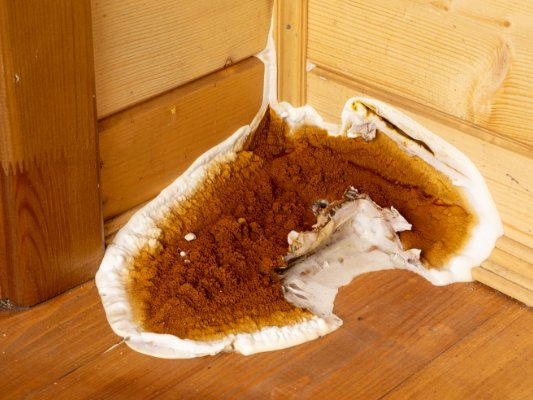Dry Rot
The True Dry Rot fungus Serpula Lacrymans is often referred to as the cancer of the building trade as infection by this fungus can lead to widespread structural damage in buildings. Dry rot can be potentially found anywhere within a building, it is often found in under floor areas, as dark and humid places provide ideal conditions for the fungus to thrive and spread over timber, masonary, concrete and soil. There are usually some unique features visible of this fungus when it is found, and it’s correct diagnosis, elimination of sources of moisture, and the correct specification remedial measures required to eradicate it, including rapid drying is vitally important.
Fibrioporia Vailiantii
This fungus, commonly known as Mine Fungus is a brown wet rot. As with all brown rots (including dry rot), cuboidal cracking of affected timber is often seen, it’s strands, which are the same colour as those of dry rot can result in it being confused with dry rot and an in-correct diagnosis from inexperienced surveyors, which results in unnecessary costs.
Coniophora Puteana
The most common brown wet rot fungus, the wood boring weevil (Pentarthrum Huttoni) is usually found together with this fungus. Decay is often severe, the appearance of affected timber can be misleading, as the outer skin of the timber is often left intact, structural collapse is common and can happen before occupiers realise that there was a problem.

